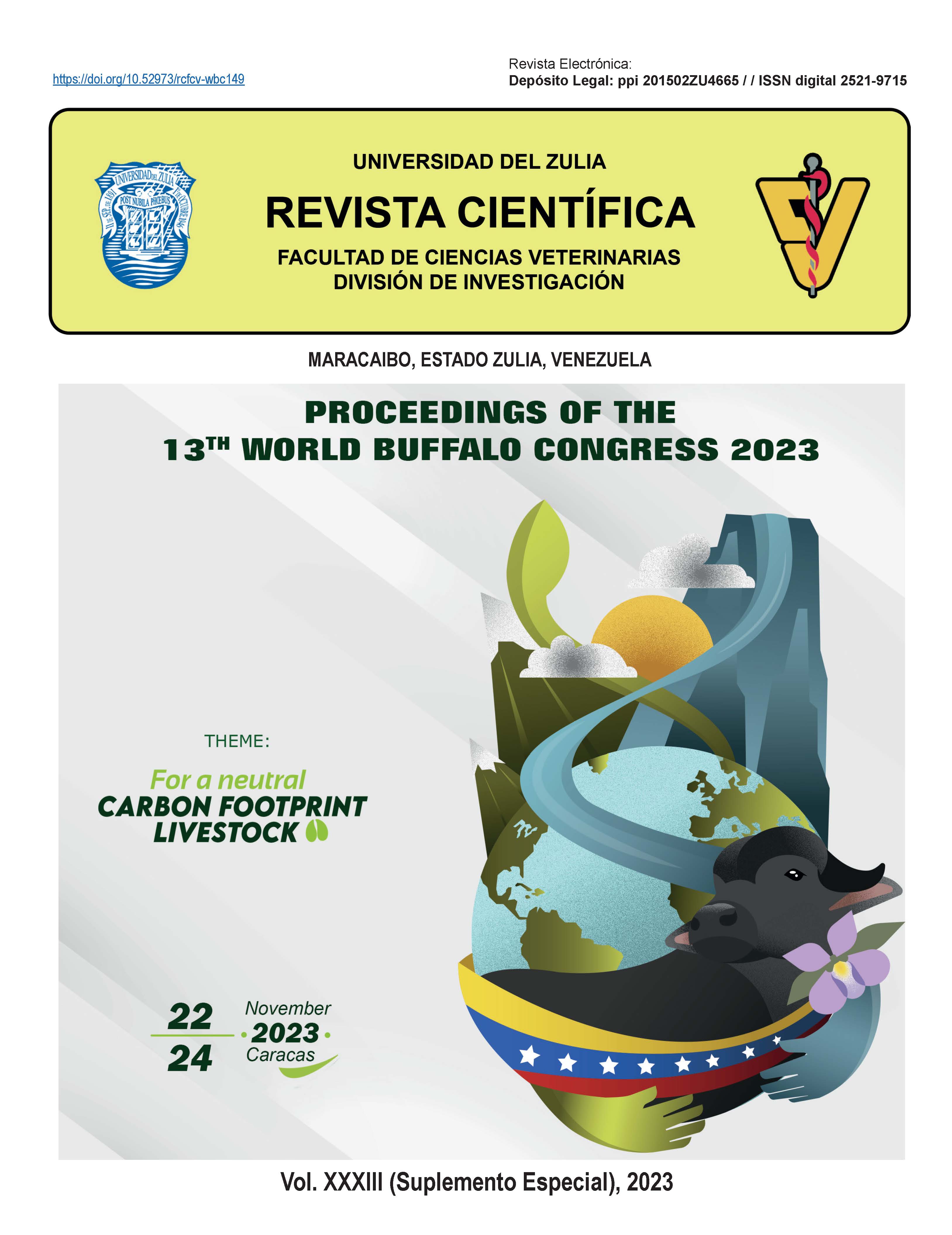Fixed timed artificial insemination in buffalo heifers with fresh and frozen-thawed semen in Argentina
Abstract
Buffalo meat and milk production is a constantly growing activity, especially in America. Artificial insemination (AI) is a better tool with a low application in this species due to the particularities of its physiology; an alternative is the application of fixed-time insemination (FTAI). The aim of the present work was to evaluate the effect of sperm source on pregnancy rates using an IATF protocol in heifers. It was performed in Argentina in four buffalo farms, during the reproductive season of 2021. A total of 627 Murrah and Mediterranean heifers were included, with age, body condition and genital development of 2.61±0.52 years, 3.58±0.58 (1-5 score), 2.49±0.50 respectively, the permeability of the cervix was also evaluated. They were synchronized using the Ovsynch protocol supplemented with 400 IU of equine chorionic gonadotrophin (eCG) on day 7. Fresh semen (30±6.5x10 6 spermatozoa) and frozen semen (40±4.4x10 6 spermatozoa) from two breeders were used. 35 days after insemination, pregnancy diagnosis was performed by ultrasonography. The data obtained were recorded in Excel spread-sheets. A comparison of gestation results was performed using the Kruskal-Wallis nonparametric test. A pregnancy rate of 50.3% (149/296) was obtained with frozen-thawed semen and 55.9% (185/331) with refrigerated semen, these differences were not statistically significant (p=0.1918). No significant differences were observed between farms (p>0.05), nor between the bulls used with the two variables of straws, with 50% and 58% of pregnancies for bull 1 and 58% and 52% and 54% of pregnancies for frozen-thawed and refrigerated semen for bull 2, respectively (p>0.05). The fertility of frozen-thawed semen was lower than that of frozen- thawed semen, without being significant, which should motivate veterinarians and breeders to cryopreserve semen from breeding stock. It is shown how acceptable pregnancy rates are obtained independently of the semen condition, which allows visualizing the application of artificial insemination in this species to achieve the necessary improvement to satisfy the needs of the industry.
















